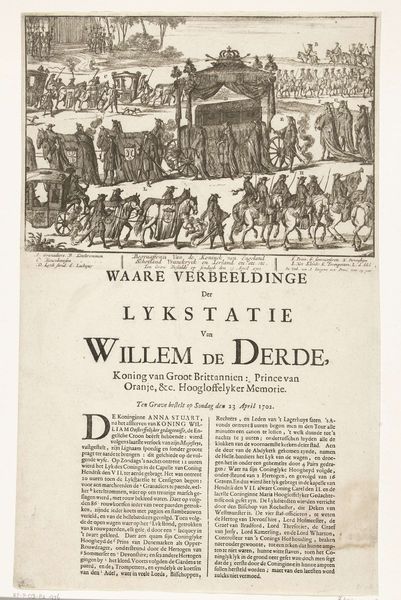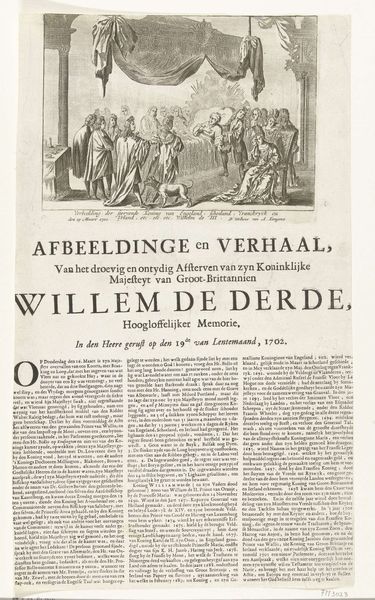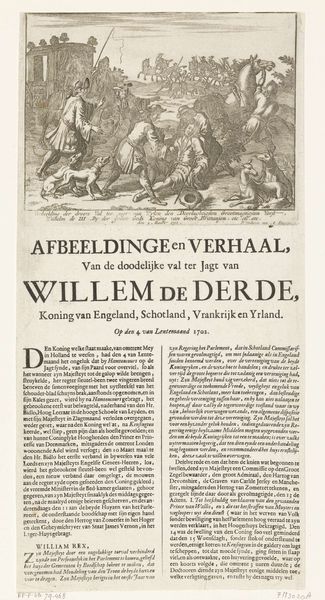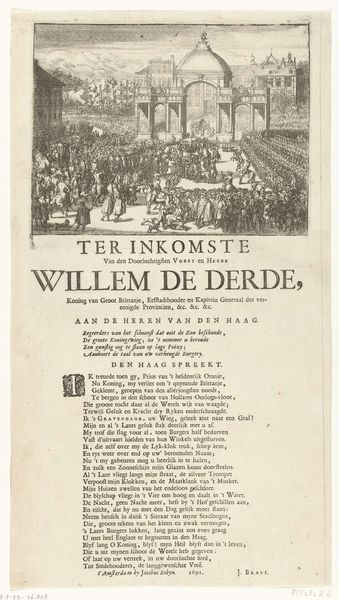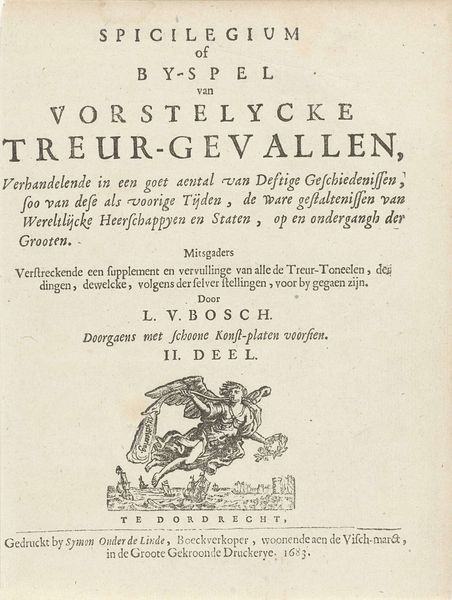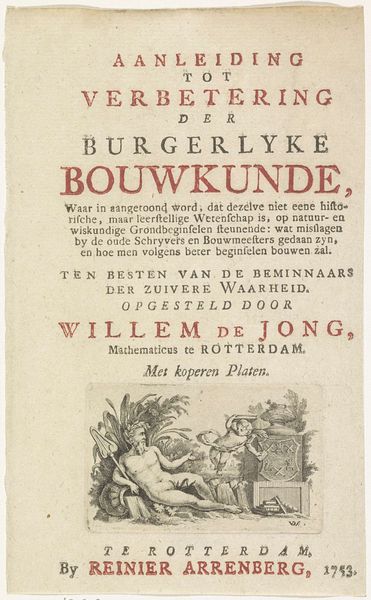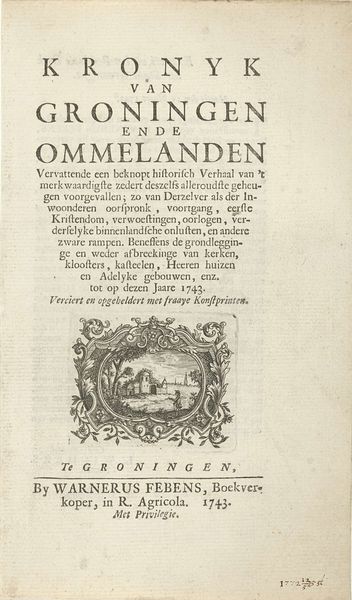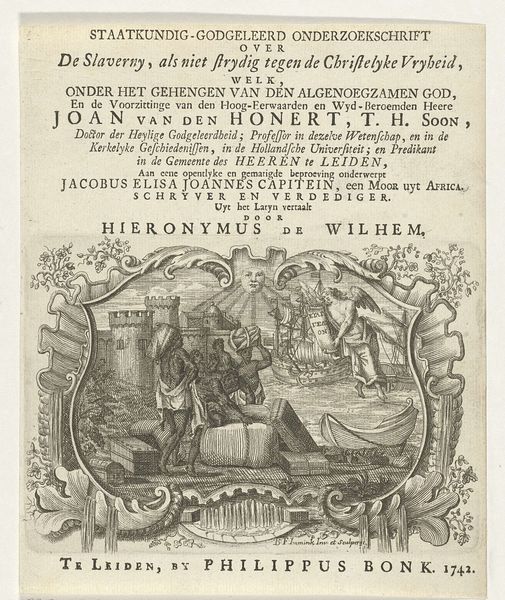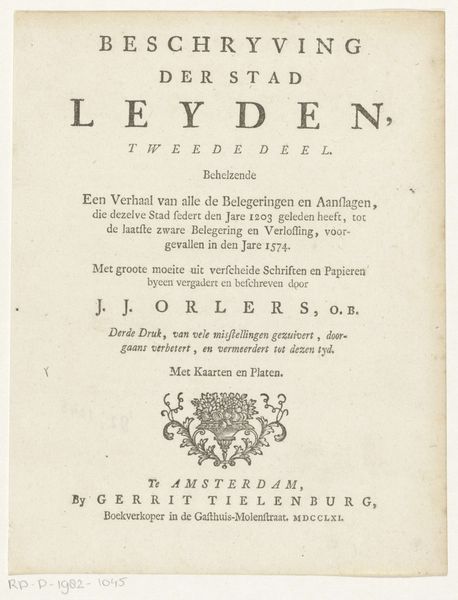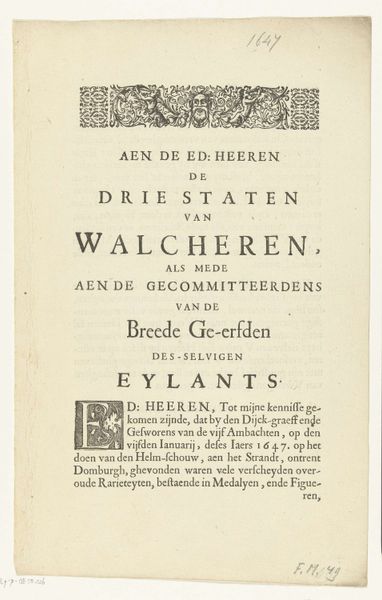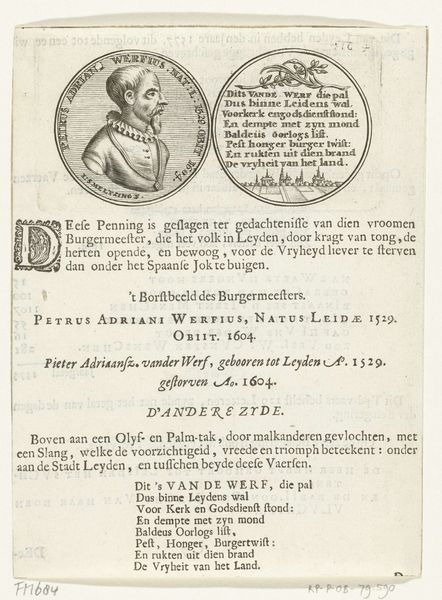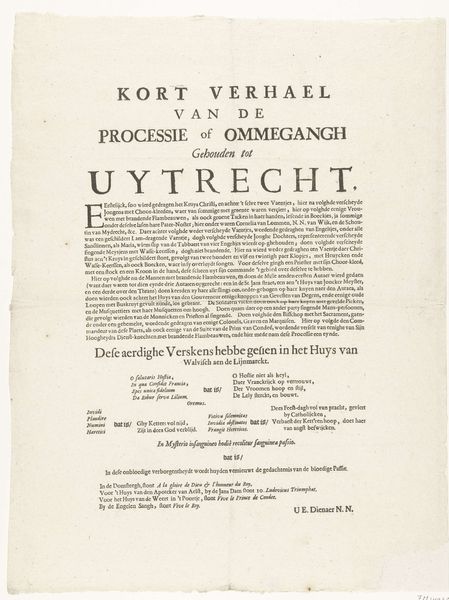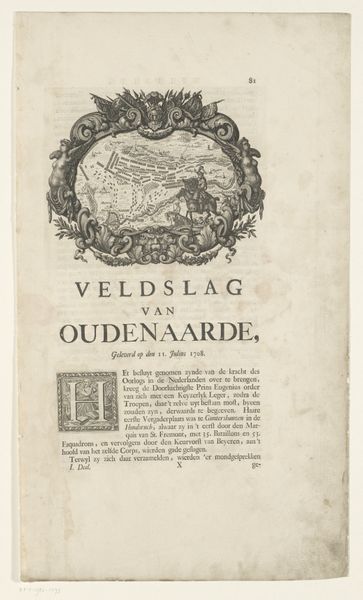
print, engraving
#
baroque
# print
#
history-painting
#
engraving
Dimensions: height 371 mm, width 202 mm
Copyright: Rijks Museum: Open Domain
Curator: Today, we're looking at a print titled "Begrafenis van koning Willem III, 1702," created in 1702, and it's currently housed in the Rijksmuseum. The piece is an engraving depicting the funeral procession of King William III. Editor: Wow, even from this distance, I can feel the somber weight of the event. The lines are so precise, almost rigid, giving the scene a real sense of formality and restraint. The procession, the horses… everything is carefully arranged. Curator: Indeed. This work adheres to the Baroque style, typical for depictions of historical and royal events. You'll notice how the artist, though anonymous, focuses heavily on documenting the grandeur and solemnity of the occasion, reflecting the power structures and social rituals surrounding a monarch's death. The use of engraving as a medium also speaks to the wider availability and consumption of such imagery at the time. It's not just about artistic expression but dissemination of information and reinforcement of authority. Editor: I'm struck by the way the artist renders the trees, almost like delicate skeletal forms lining the path. To me, they evoke a sense of the fragility of life, a reminder of mortality even amidst all the pomp. Also, notice how the detail almost fades into the background as the eye focuses on the funeral carriage, with its rather elaborate structure, really drawing one's attention. It is, after all, the king's final journey. It also looks rather… uncomfortable. Curator: The details of the carriage and the attire of those in attendance highlight the labor involved in producing and maintaining royal power. Consider the material costs – the horses, the fabrics, the engraved plates used to create prints like this. All are markers of status. Editor: It’s fascinating how a single image can capture both the tangible reality of a funeral—the physical procession—and also hint at these broader themes, about authority, consumption, grief, and the weight of history. Seeing it now I feel this interesting sense of being both connected to that event and somewhat removed from it, across all those years. Curator: Absolutely, thinking about this engraving's purpose – as a historical document, a work of art, and a form of political communication - opens it up to so much deeper reflection. Thank you for sharing that insight. Editor: My pleasure. I see a visual reminder here to honor history but keep our focus forward. A way of marking respect as we think toward a bright future.
Comments
No comments
Be the first to comment and join the conversation on the ultimate creative platform.
